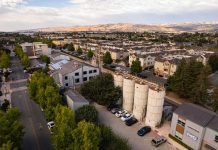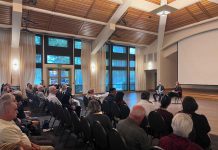Morgan Hill Times editorial board member Lisa Pampuch recently wrote a rather light-heartedly column about suspending or eliminating Morgan Hill’s RDA. Pampuch and those who agree with her are operating from a knowledge deficit. I believe they care about the issue, although perhaps not enough to educate themselves about the consequences of their ideas.
First let us address the issue of “temporary suspension” of the RDA mentioned by Pampuch. The legal possibility of doing this is small, if it is possible at all. Recent rule changes affecting RDAs would likely place such severe restrictions on restarting it that the only real possibility is either to keep it intact or to eliminate it. The legal costs of that change would likely run into the hundreds of thousands of dollars. We would be spending money to reduce our income. That sounds like a double negative to me.
Now let us move on to the “elimination scenario.” Pampuch’s column suggests that the only consequence of eliminating the RDA would be good, solving Morgan Hill’s short-term income problem. According to her column, nothing of substance would be lost. This is another point where lack of knowledge overtook her argument.
To get a more balanced idea of the impact of RDAs in general, and ours specifically, let us look at some facts about RDAs. On the statewide front there is the multiplying effect of RDA expenditures. For every $1 spent through an RDA, nearly $14 in total goods and services is generated. The economic impact is extreme leveraging of resources to increase general economic well-being. Translated, that means more jobs, an improved business climate and better services provided to communities.
The overall impact of RDAs on California’s economy in 2003 was approximately $31.84 billion. There were 310,000 full- and part-time jobs created in California in 2002-03 because of RDAs. There have been 63,406 units of affordable housing built or rehabilitated since 1994, and 20,048 units of low-and-moderate-income housing are expected to be built or refurbished in the next two years because of RDAs. RDA construction projects alone generated an additional $1.58 billion in state and local taxes in 2003.
The law dictates that 20 percent of all increased property tax revenues generated from redevelopment activities must be used to increase the supply of affordable housing. RDAs are the second-largest source of funding for affordable housing in California, right behind the federal government. Many of us are very concerned about whether our sons and daughters will live near where they grew up. RDAs are making that possible for tens of thousands across the state.
Where does the RDA money come from, you might ask. With the advent of Proposition 13, property taxes came under reasonable control, but the state got a much bigger say in what happened to our money.
Historically, property taxes were to come from and stay in the local community, funding schools and other local needs that were determined by the community. After Proposition 13, all property taxes go to the state, which then will “decide” if local communities really need that money or not. From there it flows down to the county; and if there is any left over, the crumbs are thrown to the community from which the taxes came. The original intent of local control is lost.
RDAs turn that illogic on its head. Local money stays in the local community. We decide how to spend our money. The local council, acting as the Redevelopment Board, determines how the local money we keep is spent. Although you may find it harder to trust someone you know (local council members) than someone you don’t (the governor and legislators), I don’t.
In addition to this, 67 percent of California communities have redevelopment agencies. Not having one would mean that we are subsidizing those who do. I do not think that cutting off your nose to spite your face is good judgment.
I was one of many in this community who actively participated in the visioning process that determined the uses of RDA money. The councils that followed have done an outstanding job of responsibly shepherding the process and the resources, following the vision of the community.
In Morgan Hill we have derived huge benefits from the RDA. The Community and Cultural Center, Carden School relocation, the new library, the Aquatics Center, the new Senior Center, major flood control projects, Butterfield Boulevard, a healthy ratio of low- and medium-priced housing and downtown development are just a few examples of what has been accomplished. These things would not have happened without the RDA funds.
If you look at the city’s five-year Capital Improvement Program, you will find that more than 25 percent of the funds for that development comes from the RDA – $35,852,000. This is to build roads, drainage, sewers, water infrastructure, park and public facilities, and low-cost housing.
We get to keep $16 million at home each year, instead of giving them to “trusted strangers” in Sacramento. Throwing this away because of a temporary cash shortfall is like giving your car away because the price of gas is up this month. Hunker down, tighten up and still have a car when prices go down.
Veterinarian John N. Quick is a 25-year resident of Morgan Hill. He’s been operating the Animal Medical Clinic since 1983, which was expanded in 1997 and is now the Animal Care Center. He’s one of the founders of the Wildlife Education and Rehabilitation Center and Furry Friends Foundation.







